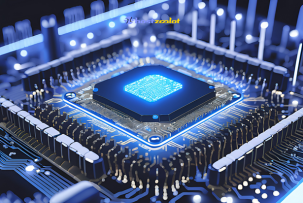Self-repairing printed circuit boards with liquid metal, even when severely damaged
13:31, 01.07.2025
The Virginia Tech Institute has developed printed circuit boards with liquid metal. A distinctive feature of this new technology is its ability to self-repair and still function even when severely damaged.
In addition, such boards can also be recycled at the end of their service life. This technology is based on a polymer called vitrimer. A distinctive feature of this material is its ability to remain strong at normal temperatures and plastic at high temperatures.
The shape of the boards made from the new material can be modified under the influence of high temperatures. This approach also makes it possible to repair the boards in case of damage. It is much easier to remove individual materials from them compared to standard boards made of silicone and epoxy resin.
Research on the new material
A compression and tensile testing machine was used to test the new material. The deformation behavior and fluidity of the material were measured using a rheometer.
The vitrimer can return to its original state at 1% deformation at a temperature of 170-200 °C. Drops of liquid metal, together with the vitrime, ensure conductivity. The material is sufficiently conductive, so only 5 percent of the mixture needs to be liquid metal.
The new type of board is designed to reduce electronic waste. Currently, damaged printed circuit boards are discarded, and there are significant problems with their disposal. Only gold electrodes and some other metals can be recovered during recycling, and the process involves the use of strong acids.


